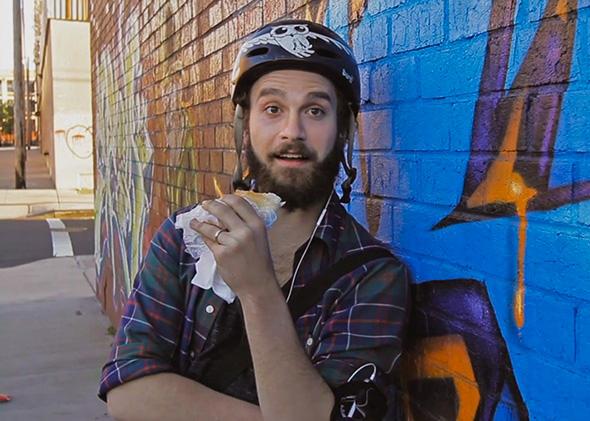It was perhaps inevitable that High Maintenance—the sensational Web series about a weed dealer—would make its way to HBO. The appeal for the network is clear: High Maintenance is low-key and likable, arty without being alienating, just the right brand of millennial-bait to dangle in front of viewers taxed by the improbable shenanigans of Girls. Still, it’s hard not to feel a twinge of trepidation that HBO could ruin exactly what makes this show so good.
High Maintenance first appeared in 2012, originally a kind of passion project for husband-and-wife team Ben Sinclair and Katja Blichfeld. The first 13 episodes are perfect. Somehow both lean and languid, with a quiet pathos that never edges into sentimentality, they follow a weed dealer called The Guy (Sinclair) on a safari into the homes of his mostly-Brooklynite clientele—his character a mellow foil for all the self-absorption and neuroses around him. Part of the magic of those episodes is how polished they manage to seem while still relying on a tiny crew, a small group of unpaid actors (wrangled by Blichfeld, who is a casting director), and borrowed sets in the form of friends’ apartments. “Matilda” even stars the show creators’ actual niece, who could not be better-cast in her role as a sweet, dorky preteen obsessed with Broadway and trivia. The apartments come to feel like characters, too: the stylish light-flooded pad in “Rachel” (starring a cross-dressing Dan Stevens), the cramped walk-up in “Helen,” (about a man who lives with his sick mother and buys weed only because he has a desperate crush on The Guy).
Then High Maintenance got financial backing from Vimeo, and began charging per episode instead of streaming for free. The new episodes were still lyrical and perceptive. (A highlight was the one involving organic milk and an extended dick joke.) But they had lost a bit of the bottled intensity and laser precision of the first batch. In a panel event at Brooklyn Academy of Music leading up to the premiere of the new episodes, Sinclair and Blichfeld mentioned that, while they were determined to maintain the intimate, DIY feel of the series, the influx of corporate cash had allowed them to expand their cast and up their production value (the crew expanded from six to 25 people).
The episodes, on average, were a few minutes longer than the pre-Vimeo episodes; they also felt more willfully satirical, with a long riff about one character’s Hunger Games–esque survivalism. Ben Sinclair’s weed dealer—his forbearing skepticism the perfect viewer surrogate—had been the warm beating center of the first 13 episodes. But in the Vimeo-backed episodes, his role was somewhat diminished as the world of the show swelled to accommodate new characters and locations.
The apartments had also receded a bit from the foreground: One episode featured a character who teaches at a public school, a set Blichfeld and Sinclair could only afford to book with Vimeo money. (“When you have no budget it’s really hard to go rent a school,” Blichfeld has said.) And this plot—idealistic white kid sets out to teach at an inner-city school, gets disabused of said idealism—was the first time High Maintenance felt like it was treading familiar ground.
Those first High Maintenance episodes were perfectly built to be a Web series: Each one neatly self-contained, bingeable in a dreamlike, free-associative way, with The Guy the only connective emotional tissue they needed. So it’s good news that HBO will bring this show to a mainstream audience. The more eyeballs on Sinclair and Blichfeld’s work, the better. But we should still hope that an HBO budget doesn’t push High Maintenance further toward becoming something it’s not.
